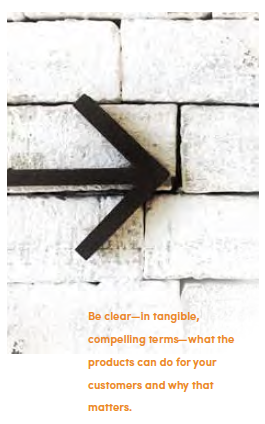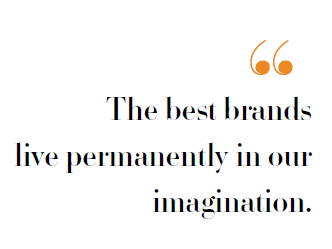Simple, straightforward steps to up your brand game.
Ford. Disney. Apple. Amazon. What do these iconic companies have in common? Aside from being the four brands consumers have the strongest emotional connection to according to the 10th annual MBLM Brand Intimacy 2020 Study, these are the brands consumers say they can’t live without.
They have become an indelible part of our lives. Close your eyes—you can see their logos and recite their slogans. You can immediately name their products and remember the first time you experienced them. They matter to you. They matter to everyone.
That’s brand equity.
DIrect selling has its own share of brands that have become a part of our collective experience, Tupperware, Avon, Mary Kay and Amway to name a few. These brands understand that creating and maintaining strong brand equity creates consumers that are passionate. And once a consumer becomes passionate about a brand, they assign added value to it.
Season 1 of DSN’s podcast, The Direct Approach with Wayne Moorehead, featured countless insights and tips on how some of the brands in our channel have amassed a tremendous amount of brand equity, which they are leveraging for future growth.
We’ve compiled a few of the most impactful and easily implemented ideas shared on the podcast and turned it into this Brand Equity Playbook—your comprehensive guide for building a bigger, better and more valuable brand.
Create Community
“If people believe they share values with a company, they will stay loyal to the brand.” —Howard Schultz, Former CEO of Starbucks
Conventional wisdom surrounding brand building almost always lists “know your customer” as the most important thing. But knowing who your customer is isn’t nearly enough. You also need to understand your customer; connect with your customer; and—most importantly—create shared experiences with your customer.

It’s imperative to develop a fuller understanding of not just who they are but who they want to be; why they are interested in your products (or your opportunity); what needs your products can fulfill; and what they hope to accomplish from their interaction with you.
Brands that can create genuine community around their products and opportunity automatically build a vocal army of advocates, which does a lot of the heavy lifting for you. Brian Underwood, Co-Founder and CEO of Prüvit, called this community marketing approach pivotal to his company’s strategy.
“Community-based marketing to me is re-identifying what is valuable in today’s marketplace. If you want to build something to last, you have to be able to harness the emotional connection that your fans, your promoters, your distributors and even your audience has. When you do that, it becomes less about sales and more about connection. The transaction isn’t more important than the person.”
UP YOUR EQUITY / Create content that problem solves. Host a live product Q&A, demo or tutorial. Develop an online personal development book club. When you put the needs of your audience first and your brand second, your interactions instantly become more meaningful.
Jesse McKinney, Co-Founder and CEO of Red Aspen, has found this approach also works when creating a community around your opportunity. So much time is spent in direct selling helping distributors find their “why.” But at Red Aspen, they are laser focused on delivering their “how.”
Learning and valuing the goals of individual distributors creates synergy between corporate and field. Some distributors are looking for money for their kids’ karate lessons; others want an extra date night each month; and some are looking to become full-time entrepreneurs.
As McKinney said, “It’s important in any direct selling organization to match up ‘how’ and ‘why.’ We can be the how that gets you to your why. That’s where passion comes in. I can’t instill in you the passion it takes to achieve your ‘why’ every day, but I can give you the tools you need to get there.”

According to Underwood, the pay-off also results in better customer and distributor retention as well. “People want to be a part of something that’s bigger than they are. You can recognize that everyone has their place, and every spoke in the wheel is important. I think we sometimes get so focused on this person making a million dollars a year that we forget how many people we lose out the back door because we don’t keep them connected.”

Making those connections also comes from creating customer experiences that manage to spark interest and excitement as well as meet customers where they are and how they live. Direct selling is all about authentic connections, and companies like Neora are finding ways to build these connections as we straddle a moment in time where virtual meetings dominate but don’t always resonate.
Amber Olson Rourke, Chief Sales and Marketing Officer, offered some insights on how they are returning to in-person product demos. “People are tired of being behind a computer screen, so that’s not where they are at now. Our field is already transitioning back to incorporating in-person events. We’re calling them mini mixers because we want them to feel fun.”
Olson Rourke characterized these events as more low-key and less traditional than a formal presentation. “We put together activities that correspond with our products, so that there’s an experience. Things like meal prepping salads for the week and talking about our weight management line; or doing a sip-and-see where people have a glass of wine and get pampered with a few of our products. I would argue there’s no easier time to get someone to come to a fun party than right now, because that’s what they’re looking for.”
Differentiate
“If you don’t give the market the story to talk about, they’ll define your brand’s story for you.” —David Brier, author of Brand Intervention
For all companies, one of the most crucial steps to building brand equity is to differentiate yourself from the competition. This is especially true for direct sellers. In this channel, you aren’t just marketing products. You are offering a community, an opportunity and a partnership. Be clear—in tangible, compelling terms—what the products can do for your customers and why that matters. How do you articulate what you and your products do better than anyone else? What pain point are you eliminating, and for whom?
At Scentsy, they have leaned into their brand equity in fragrance as a way to differentiate themselves and as a filter for product line expansion. “We got very focused on where we believe this brand can and should go. We basically decided that in order for Scentsy to go there, it needs to have an anchor and a tie to fragrance,” explained Mark Stastny, Chief Marketing Officer. “For example, essential oils are very popular, and we do have essential oils in our product lineup. But we only approach essential oils from the fragrance experience that they can provide. We anchor it in and around that.”
UP YOUR EQUITY / Adding equity is often synonymous with adding value. Partner with a nutritionist to develop exclusive flavors and smoothie recipes. Get your community of customers and distributors involved to name your next big launch or promotion.

As important as products are to brand equity, they are not the only way to differentiate your company from others in your space. Direct sellers are—almost by default—lifestyle brands. Distributors and, to an extent, customers become a part of that lifestyle when they choose to partner with you.
You don’t have to be all things to all people. You shouldn’t be all things to all people. Create a clear brand identity that is reflected across all touchpoints. Is your color palette, voice, photography, packaging and branded merchandise working synergistically? And do they accurately convey the right tone, spirit and personality? Whether your brand is youthful, irreverent and fun or homey, comforting and nostalgic, lean into who you are and build your look, feel, voice and messaging around it.
You’ve probably all experienced some variation of this: When being pitched a new product, promotion, service or initiative, inevitably someone will ask “Who is the target audience?” Just as predictably, the person pitching will earnestly reply, “Everyone.”
While wanting to appeal to everyone is noble, diluting your messaging to do so doesn’t build brand equity or loyalty. The best brands are bold, memorable, confident, full of conviction. They know who they are. They like who they are. And so does their audience.
“The brand and how the brand makes you feel is so important,” said McKinney. “So, for us, getting that fun, playful nomenclature out there, I think is just as important as what you see visually with the stunning packaging that we deliver and the photos we take.”
“The way that you talk about your product really matters. The way that you brand your product really matters because you have three seconds. And if you’ve got three seconds, how are you going to make it pop, and what does your brand say about you? What does it represent if you’ve just got a split second for someone to be interested or not?”
UP YOUR EQUITY / Make your brand’s voice as impactful as its products. If your brand relies heavily on throwaway platitudes like “easy elegance,” “fits your lifestyle,” “scientifically sound,” or “committed to quality,” you have an opportunity to enhance and better connect to your brand voice.
Doing Good
“Your brand is a gateway to your true work.” —Dave Buck, CEO of Coachville
Your philanthropic efforts can not only create positive change in the world, they can move the needle on your brand equity, too. Supporting worthwhile causes has long been a differentiator for the channel—it can be a differentiator within it as well.

Think of how much deeper your connection with your audience could be when it’s grounded in important work that makes the world a better place. People want to be a part of a movement—something bigger than themselves—how powerful would it be if that something bigger was a charitable cause that you support?
Direct selling companies of all sizes are putting their weight, resources and voices into advocacy. In doing so with authentic intention, they show their audience who they are and what they believe in. This not only draws the right people to you, it deepens customer loyalty and reinforces relationships.

“It just makes sense. Advocacy has been fundamental to direct selling from the beginning. And when the philanthropy seamlessly reinforces the brand’s core messaging and purpose, it feels authentic and can truly elevate and set a company apart,” said Moorehead.
Shaklee was green in the 1950s—long before it became a buzzword. Avon is still committed to empowering women, donating more than $1.1 billion to gender-based violence and breast cancer awareness initiatives. More than 1,500 MONAT volunteers recently conducted a Gratitude Week for charitable actions and interactive giving activities to provide support for children and those in need. And early cause-marketing adopter Pampered Chef has a decades-long partnership with Feeding America.
“Gratitude has become such a special part of MONAT culture, and Gratitude Week is the most beautiful week of the year for us because it shows how important making a positive impact is to our entire community,” shared Lu Urdaneta, CEO of MONAT Gratitude.
Building A Better Brand

“Products are made in a factory, but brands are created in the mind.” —Walter Landor, Founder of brand consulting firm Landor
The best brands live permanently in our imagination. We have happy memories and positive experiences we associate with them. Their products help us live better, simpler, smarter or healthier lives. The value they bring us keeps us consistently engaged, entertained and excited.
Adopting the simple principles outlined here will help make sure your brand develops the kind of equity that gains you more customers; turns those customers into powerful advocates; and elevates your brand to iconic status in the minds and hearts of people across the globe.
From the February 2022 issue of Direct Selling News magazine.


